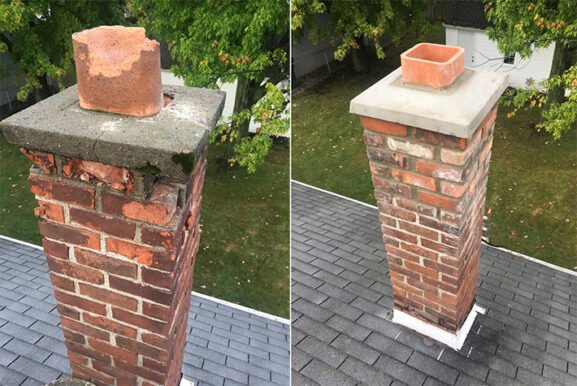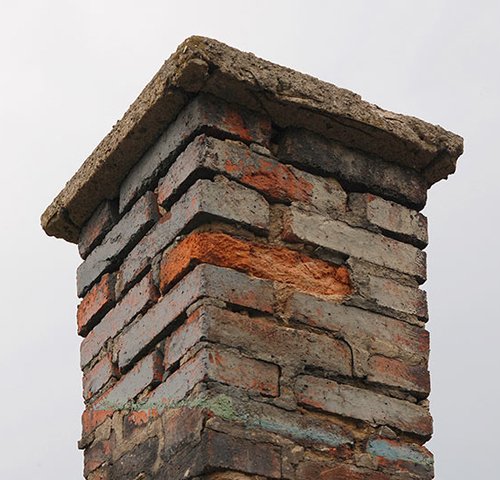Why Now Is the Right Time to Learn How to Repair a Chimney the Right Way
Key Takeaways
- Regular chimney inspections can help identify issues before they escalate into major structural problems
- Chimney repairs often involve addressing cracks, leaks, or damaged mortar and flashing
- DIY fixes may work for minor damage, but professional help is crucial for long-term safety
- Timely chimney repair enhances energy efficiency and reduces fire hazards
Understanding the Importance of Chimney Repairs
A chimney is more than just an architectural feature—it plays a key role in venting smoke, gases, and moisture from your home safely. Over time, exposure to weather, age, and creosote buildup can lead to various forms of damage. If these issues are not addressed promptly, they can compromise your home’s structural integrity and even become fire hazards.
Learning how to repair a chimney starts with identifying the problem areas. A damaged chimney may show signs like crumbling mortar, missing bricks, water leaks, or even a leaning stack. Recognizing these symptoms early gives you a better chance of fixing them before the costs and risks increase.
Common Types of Chimney Damage You Should Know
Different parts of a chimney can wear out over time, and each requires a different repair approach. Here’s a look at the most common issues:
Cracked or Deteriorating Mortar
Mortar joints hold the bricks or stones of the chimney together. When exposed to moisture and freezing temperatures, they can crack or crumble. This not only weakens the structure but allows water to penetrate, which accelerates deterioration. Tuckpointing, a process where damaged mortar is replaced with fresh material, can restore structural strength and appearance.
Damaged Chimney Crown
The crown is the top layer that protects the chimney from rain and debris. If it’s cracked, water can seep into the masonry below, causing damage. Repairing a chimney crown typically involves sealing small cracks with a waterproof compound or, in more severe cases, rebuilding the crown altogether.
Flashing Leaks
Chimney flashing is the metal material that seals the intersection between the chimney and the roof. If the flashing is loose, rusted, or improperly installed, it can allow water to enter your attic or living space. Repair often involves resealing or replacing the flashing to create a watertight barrier.
Spalling Bricks
Spalling occurs when moisture causes the surface of bricks to peel or flake off. This is often a sign of water infiltration and can lead to structural weakening if not treated. Repairing spalling may require removing and replacing the affected bricks and applying a water-repellent sealant.
How to Approach Basic Chimney Repairs
While some chimney repairs require a licensed mason or chimney specialist, minor issues can sometimes be addressed by homeowners with the right tools and safety precautions.
Sealing Minor Cracks
If you notice hairline cracks in the crown or bricks, a high-quality chimney sealant can be used to prevent water from getting in. Be sure to clean the surface thoroughly before applying the sealant, and always follow manufacturer instructions for drying times and application methods.
Repointing Mortar Joints
Repointing involves scraping out old, damaged mortar and replacing it with fresh mortar. This helps reinforce the structure and reduce moisture penetration. Tools you’ll need include a hammer, chisel, mortar mix, and pointing trowel. However, matching the color and consistency of the new mortar with the old can be challenging, especially for older homes.
Installing a Chimney Cap
A chimney cap helps keep rain, animals, and debris out of your chimney. It also helps prevent downdrafts that can bring smoke back into your home. Installing a chimney cap is a fairly straightforward DIY task, but be sure to measure your flue size accurately and secure the cap tightly with appropriate fasteners.
When to Call in a Professional
Not all chimney repairs are safe or practical to handle on your own. Structural issues, persistent leaks, or problems involving the flue liner should always be inspected and repaired by a certified chimney technician. According to the Chimney Safety Institute of America (CSIA), regular professional inspections and cleanings are essential for preventing chimney fires and maintaining proper venting systems (source).
A professional will have the tools and knowledge to assess hard-to-see damage, work safely at heights, and make long-term repairs that comply with local building codes.
The Role of Seasonal Maintenance in Chimney Longevity
Chimney problems often worsen with changes in temperature and moisture levels. For instance, freeze-thaw cycles in winter can widen existing cracks, while summer storms may bring heavy rain that infiltrates weak mortar or flashing. Seasonal maintenance plays a crucial role in catching these issues early.
Before winter, it’s wise to schedule a full chimney inspection and cleaning to clear creosote buildup and address any structural issues. In spring, check for signs of water damage or shifting masonry. Routine care ensures that your chimney stays efficient and safe year-round.
The Cost of Neglecting Chimney Repairs
Ignoring chimney damage can lead to much larger and costlier problems. A simple crack may evolve into a full chimney rebuild if water continues to seep in. Leaks can spread to surrounding walls and ceilings, leading to mold growth and interior damage. In extreme cases, structural collapse or fire hazards may occur.
Not only does this affect your home’s safety, but it can also lower property value and increase home insurance costs. Repairing a chimney early is always more affordable than waiting until the damage is widespread.
Safe Repairs Start With Smart Planning
Before attempting any repairs, make sure you have a solid plan. That includes gathering the right tools, wearing appropriate safety gear, and understanding the full extent of the damage. For many homeowners, hiring a professional inspector first can help clarify the scope of the work needed.
This step is especially important if you’re unsure about working at heights or assessing structural integrity. Most chimney-related injuries happen due to falls or incomplete repairs, so safety should always be your top concern.
Practical Next Steps for Homeowners
If you suspect your chimney needs repair, begin by documenting any visible issues. Take photos of cracks, water stains, or damaged bricks. Schedule an inspection with a qualified chimney service provider if needed. Keep up with annual cleanings and never overlook small issues—most major repairs begin with something minor.
Understanding how to repair a chimney gives you more control over your home’s safety and maintenance, but knowing when to seek help is just as important. Whether you’re sealing a minor crack or planning a complete crown rebuild, approaching the job with the right information will help you get it done right.

